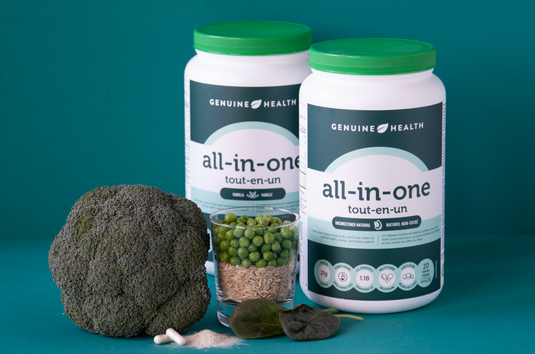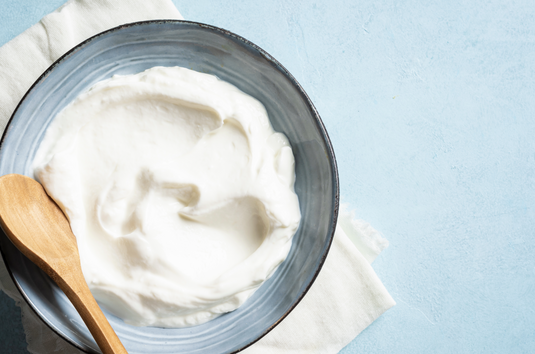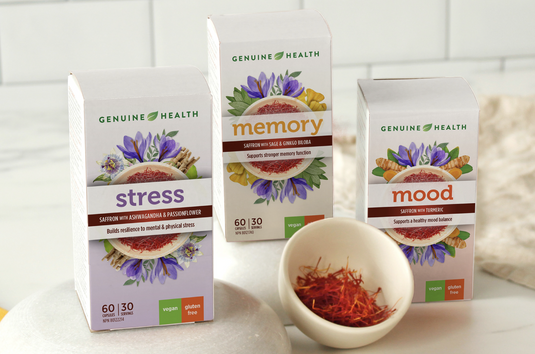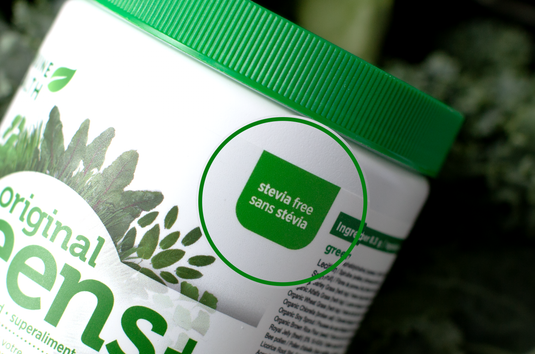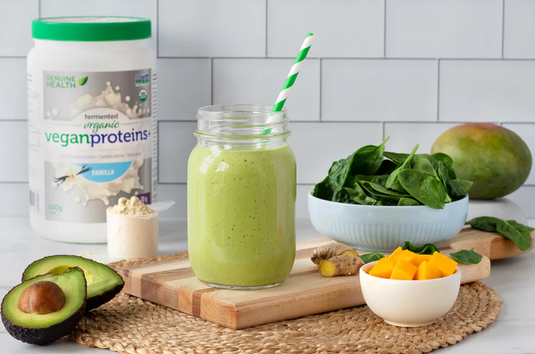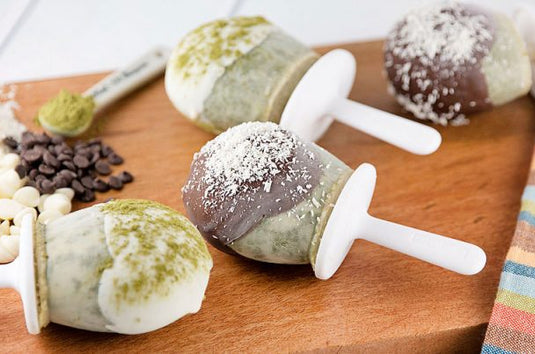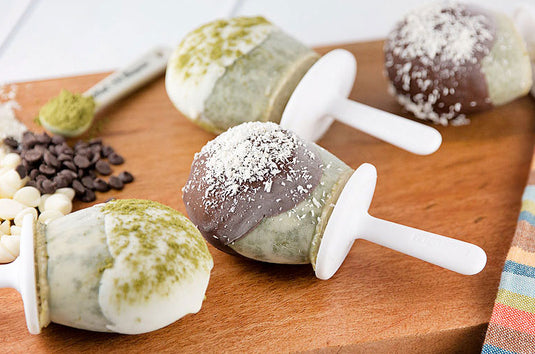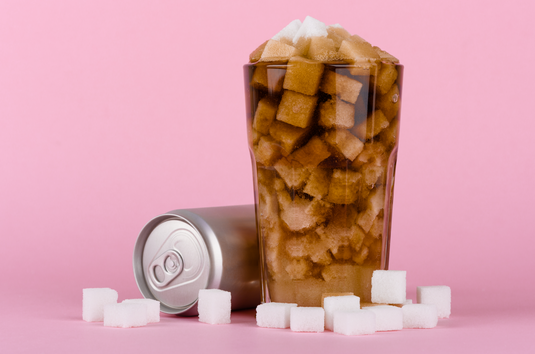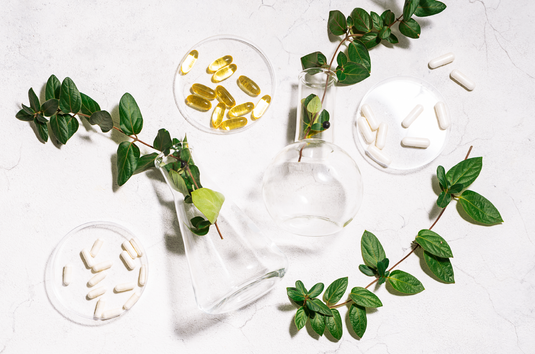5 raisons pour lesquelles votre probiotique ne fonctionne pas

Vous achetez des probiotiques en pensant qu'ils auront un impact considérable sur votre bien-être. Vous les prenez pendant une semaine ou deux, et… rien. Vous ne sentez aucune différence. Ou pire, vous vous sentez plus ballonné et votre digestion est plus difficile qu'au début.
Les recherches sont claires : les probiotiques peuvent améliorer votre santé. 1. Mais peut-être devrions-nous préciser « certains », car en réalité, certains probiotiques sont plus efficaces que d’autres.
Cela nous a intrigués, nous avons donc passé beaucoup de temps à réfléchir à la manière de créer un excellent probiotique qui ferait réellement une différence dans la façon dont vous vous sentez.
Et pendant ce temps, nous avons appris que si votre probiotique ne fonctionne pas pour vous, cela peut être dû au fait que les bactéries n'atteignent pas votre intestin vivantes, ou peut-être que ce n'est tout simplement pas la bonne formule pour vous.
Voici comment déterminer pourquoi votre probiotique ne fonctionne pas pour vous et comment trouver un probiotique qui le fera.
Nous avons tous connu cela à un moment ou un autre, lorsque nous avons dû prendre des antibiotiques. Mais après une cure d'antibiotiques, une formule probiotique différente est bénéfique pour nous plutôt que d'acheter un probiotique pour un soutien quotidien. Notre intestin contient des milliers d'espèces différentes de bactéries probiotiques ; dans la plupart des cas, pour la plupart d'entre nous, les probiotiques les plus efficaces contiennent une variété de souches bactériennes différentes qui se reproduisent et reconstituent davantage de bactéries bénéfiques. En fait, dans 75 % des cas où les études ont comparé des formules probiotiques multi-espèces à des formules individuelles, la formule multi-souches s'est avérée plus efficace !
Mais revenons à la question des antibiotiques : un probiotique fabriqué à partir d'une seule souche pourrait être plus efficace dans une situation aiguë, comme lorsque nous venons de terminer une série d'antibiotiques, mais si l'objectif est un soutien quotidien, le mieux est d'opter pour une formule probiotique multi-souches.
L'Organisation mondiale de la Santé (OMS) définit les probiotiques comme des micro-organismes vivants qui, administrés en quantité adéquate, procurent un bénéfice pour la santé de l'hôte. Les mots clés ici sont « vivant » et « bénéfice », car pour que vous ressentiez un bénéfice, vos probiotiques doivent être vivants ! Comment le savoir ? Un bon point de départ est de vérifier que votre probiotique possède une UFC garantie à la date de péremption : cela vous indiquera le nombre de bactéries vivantes garanties à la date de péremption.
De plus, de nombreux probiotiques sont vendus en flacons, ce qui expose les capsules à l'humidité et à l'air ambiant à chaque ouverture. Privilégiez plutôt un probiotique longue conservation, conditionné sous blister.
Les bactéries probiotiques sont des organismes vivants fragiles. Pour vous être bénéfiques, elles doivent traverser le difficile milieu acide de votre estomac et atteindre votre intestin vivant. Mais c'est difficile ! Des recherches ont montré que si vous prenez des probiotiques par voie orale et sans gélule, de nombreuses souches de probiotiques n'atteignent pas votre intestin vivant. C'est là qu'intervient la gélule : elle protège les probiotiques de l'acidité gastrique. Privilégiez un probiotique encapsulé dans une gélule à libération prolongée, sans plastique, qui délivrera les bactéries vivantes et prêtes à agir dans votre intestin.
Vous avez donc acheté un probiotique multi-souches ? Super ! Mais vous n'avez pas l'impression qu'il soit efficace… C'est peut-être parce que votre probiotique multi-souches ne contient pas de souches équilibrées . Nous avons passé beaucoup de temps à étudier les formules de probiotiques et avons constaté que beaucoup d'entre elles sont principalement à base de L. acidophilus et de L. rhamnosus – deux souches résidentes dont la contribution est limitée sans l'aide d'autres espèces. Méfiez-vous également des mélanges de probiotiques « propres », car les fabricants pourraient n'y ajouter qu'une ou deux souches. Pour une transparence totale, privilégiez un probiotique dont l'étiquette indique toutes les souches et leurs quantités.
Beaucoup d'entre nous pensent qu'un probiotique peut résoudre tous nos problèmes. Mais les probiotiques ne peuvent pas tout faire à eux seuls. Il faut créer un environnement propice à leur épanouissement, et c'est là qu'interviennent les prébiotiques (les prébiotiques sont la nourriture de vos probiotiques). Le problème, c'est que la plupart des prébiotiques peuvent provoquer des troubles digestifs (oh non merci !). Mais la science vient de découvrir qu'une classe de phytonutriments appelés polyphénols peut apporter un bienfait prébiotique – et surtout, sans ballonnements ni troubles digestifs ! Recherchez un superaliment prébiotique à prendre en complément de vos probiotiques.
Vous recherchez un probiotique efficace, et nous le comprenons. Chez Genuine Health, nous prenons nos produits très au sérieux. Nous avons consacré beaucoup de temps à la création de probiotiques avancés pour la santé intestinale afin qu'ils améliorent réellement votre bien-être. Nous en sommes très fiers, car nous avons travaillé en amont pour garantir qu'ils apportent à votre intestin des bactéries plus saines et bénéfiques.
Nous commençons par sélectionner 15 souches de lactobacilles et de bifidobactéries résidentes et transitoires, et les assemblons dans une formule équilibrée qui contient suffisamment d'UFC de chacune pour apporter un bénéfice.
Ensuite, nous les nettoyons trois fois pour éliminer toutes les souches faibles et garantir que seules les plus robustes et les plus saines restent.
Nous les plaçons ensuite dans une capsule à libération prolongée sans plastique, dont il a été démontré qu'elle apporte jusqu'à 10 fois plus de bactéries à l'intestin. Toutes les formules avancées pour la santé intestinale sont stables à température ambiante et conditionnées dans un blister résistant à l'humidité. Elles sont également végétaliennes et exemptes d'allergènes tels que le gluten, le blé, les produits laitiers, les fruits à coque, le poisson, les œufs et les sulfites.
Mais ce n'est pas tout. Nous sommes convaincus qu'il est important de créer un environnement propice au développement des bactéries probiotiques. C'est pourquoi nous avons créé Superaliments Intestinaux Bio Fermentés+ , un superaliment prébiotique composé de 22 superaliments et prébiotiques entièrement fermentés pour favoriser une flore intestinale saine et florissante, et apporter des bienfaits à l'organisme tout entier.
1 Taibi, et al. Approches pratiques de l'utilisation des probiotiques. Appl. Physiol. Nutr. Metab. Août 2014 ; 39(8) : 980-6
Les recherches sont claires : les probiotiques peuvent améliorer votre santé. 1. Mais peut-être devrions-nous préciser « certains », car en réalité, certains probiotiques sont plus efficaces que d’autres.
Cela nous a intrigués, nous avons donc passé beaucoup de temps à réfléchir à la manière de créer un excellent probiotique qui ferait réellement une différence dans la façon dont vous vous sentez.
Et pendant ce temps, nous avons appris que si votre probiotique ne fonctionne pas pour vous, cela peut être dû au fait que les bactéries n'atteignent pas votre intestin vivantes, ou peut-être que ce n'est tout simplement pas la bonne formule pour vous.
Voici comment déterminer pourquoi votre probiotique ne fonctionne pas pour vous et comment trouver un probiotique qui le fera.
1. Ce n'est pas le bon probiotique pour vous
Nous avons tous connu cela à un moment ou un autre, lorsque nous avons dû prendre des antibiotiques. Mais après une cure d'antibiotiques, une formule probiotique différente est bénéfique pour nous plutôt que d'acheter un probiotique pour un soutien quotidien. Notre intestin contient des milliers d'espèces différentes de bactéries probiotiques ; dans la plupart des cas, pour la plupart d'entre nous, les probiotiques les plus efficaces contiennent une variété de souches bactériennes différentes qui se reproduisent et reconstituent davantage de bactéries bénéfiques. En fait, dans 75 % des cas où les études ont comparé des formules probiotiques multi-espèces à des formules individuelles, la formule multi-souches s'est avérée plus efficace !
Mais revenons à la question des antibiotiques : un probiotique fabriqué à partir d'une seule souche pourrait être plus efficace dans une situation aiguë, comme lorsque nous venons de terminer une série d'antibiotiques, mais si l'objectif est un soutien quotidien, le mieux est d'opter pour une formule probiotique multi-souches.
Qu'en est-il des souches étudiées ?
De nombreuses entreprises vantent leurs souches éprouvées par la recherche. Disposer d'une souche cliniquement validée est un atout majeur ; il suffit de vérifier qu'elle offre les bienfaits recherchés !
2. Les bactéries ne sont pas vivantes
L'Organisation mondiale de la Santé (OMS) définit les probiotiques comme des micro-organismes vivants qui, administrés en quantité adéquate, procurent un bénéfice pour la santé de l'hôte. Les mots clés ici sont « vivant » et « bénéfice », car pour que vous ressentiez un bénéfice, vos probiotiques doivent être vivants ! Comment le savoir ? Un bon point de départ est de vérifier que votre probiotique possède une UFC garantie à la date de péremption : cela vous indiquera le nombre de bactéries vivantes garanties à la date de péremption.
De plus, de nombreux probiotiques sont vendus en flacons, ce qui expose les capsules à l'humidité et à l'air ambiant à chaque ouverture. Privilégiez plutôt un probiotique longue conservation, conditionné sous blister.
3. Les bactéries n'atteignent pas votre intestin
Les bactéries probiotiques sont des organismes vivants fragiles. Pour vous être bénéfiques, elles doivent traverser le difficile milieu acide de votre estomac et atteindre votre intestin vivant. Mais c'est difficile ! Des recherches ont montré que si vous prenez des probiotiques par voie orale et sans gélule, de nombreuses souches de probiotiques n'atteignent pas votre intestin vivant. C'est là qu'intervient la gélule : elle protège les probiotiques de l'acidité gastrique. Privilégiez un probiotique encapsulé dans une gélule à libération prolongée, sans plastique, qui délivrera les bactéries vivantes et prêtes à agir dans votre intestin.
4. Il ne contient pas de souches équilibrées
Vous avez donc acheté un probiotique multi-souches ? Super ! Mais vous n'avez pas l'impression qu'il soit efficace… C'est peut-être parce que votre probiotique multi-souches ne contient pas de souches équilibrées . Nous avons passé beaucoup de temps à étudier les formules de probiotiques et avons constaté que beaucoup d'entre elles sont principalement à base de L. acidophilus et de L. rhamnosus – deux souches résidentes dont la contribution est limitée sans l'aide d'autres espèces. Méfiez-vous également des mélanges de probiotiques « propres », car les fabricants pourraient n'y ajouter qu'une ou deux souches. Pour une transparence totale, privilégiez un probiotique dont l'étiquette indique toutes les souches et leurs quantités.
5. Vous ne prenez pas votre probiotique avec des polyphénols et des prébiotiques
Beaucoup d'entre nous pensent qu'un probiotique peut résoudre tous nos problèmes. Mais les probiotiques ne peuvent pas tout faire à eux seuls. Il faut créer un environnement propice à leur épanouissement, et c'est là qu'interviennent les prébiotiques (les prébiotiques sont la nourriture de vos probiotiques). Le problème, c'est que la plupart des prébiotiques peuvent provoquer des troubles digestifs (oh non merci !). Mais la science vient de découvrir qu'une classe de phytonutriments appelés polyphénols peut apporter un bienfait prébiotique – et surtout, sans ballonnements ni troubles digestifs ! Recherchez un superaliment prébiotique à prendre en complément de vos probiotiques.
C’est ce genre de choses qui nous passionne vraiment.
Vous recherchez un probiotique efficace, et nous le comprenons. Chez Genuine Health, nous prenons nos produits très au sérieux. Nous avons consacré beaucoup de temps à la création de probiotiques avancés pour la santé intestinale afin qu'ils améliorent réellement votre bien-être. Nous en sommes très fiers, car nous avons travaillé en amont pour garantir qu'ils apportent à votre intestin des bactéries plus saines et bénéfiques.
Nous commençons par sélectionner 15 souches de lactobacilles et de bifidobactéries résidentes et transitoires, et les assemblons dans une formule équilibrée qui contient suffisamment d'UFC de chacune pour apporter un bénéfice.
Ensuite, nous les nettoyons trois fois pour éliminer toutes les souches faibles et garantir que seules les plus robustes et les plus saines restent.
Nous les plaçons ensuite dans une capsule à libération prolongée sans plastique, dont il a été démontré qu'elle apporte jusqu'à 10 fois plus de bactéries à l'intestin. Toutes les formules avancées pour la santé intestinale sont stables à température ambiante et conditionnées dans un blister résistant à l'humidité. Elles sont également végétaliennes et exemptes d'allergènes tels que le gluten, le blé, les produits laitiers, les fruits à coque, le poisson, les œufs et les sulfites.
Mais ce n'est pas tout. Nous sommes convaincus qu'il est important de créer un environnement propice au développement des bactéries probiotiques. C'est pourquoi nous avons créé Superaliments Intestinaux Bio Fermentés+ , un superaliment prébiotique composé de 22 superaliments et prébiotiques entièrement fermentés pour favoriser une flore intestinale saine et florissante, et apporter des bienfaits à l'organisme tout entier.
1 Taibi, et al. Approches pratiques de l'utilisation des probiotiques. Appl. Physiol. Nutr. Metab. Août 2014 ; 39(8) : 980-6

